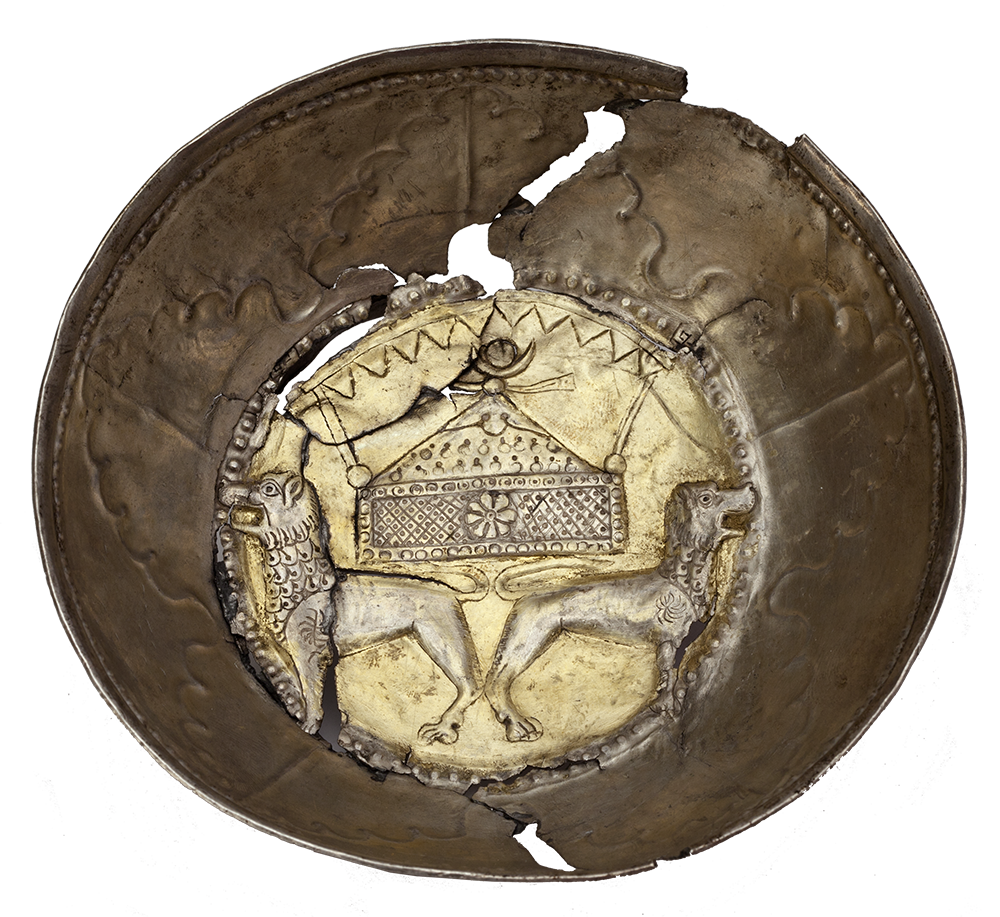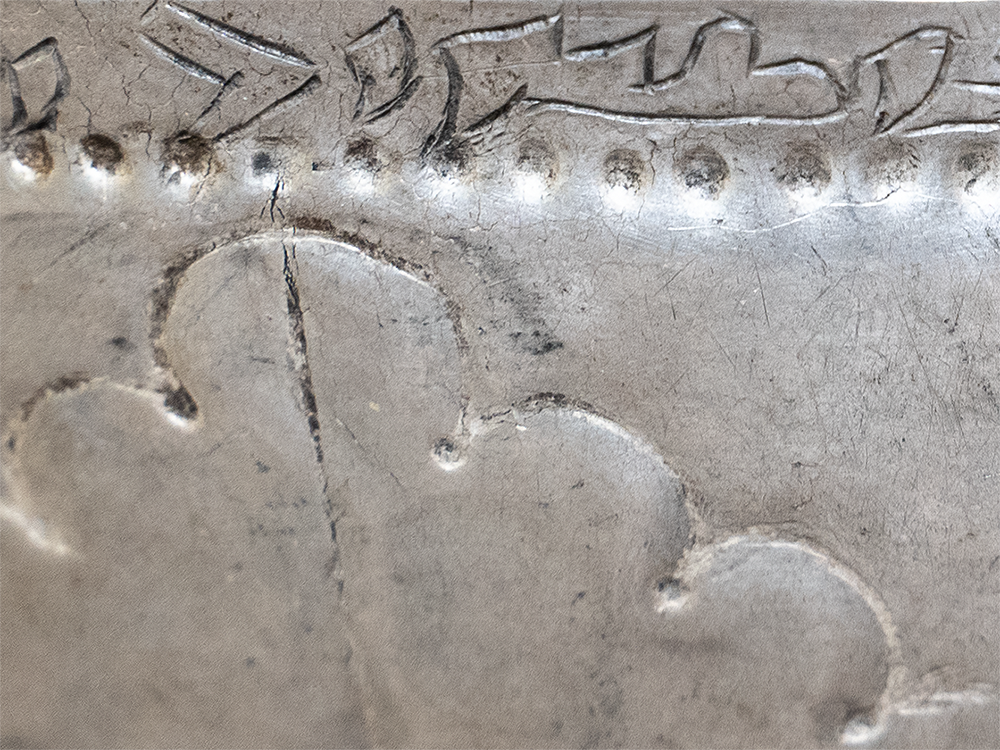Dish (plate)


Researchers link origin of the dish and its images with Central Asia (possibly with city of Khorezm). Composition reproduced on the dish is a ritual scene associated with the Cult of Ancestors widespread in Central Asia at that time.
The image demonstrates the ritual of worshipping the remains of Rulers held twice a year (in spring and in autumn).
A silver dish with a wide rim on a small circular stand with a gilded bottom. An engraved inscription runs along the outer edge and preserved part of the stand. On the inner side of the flat bottom is a chased composition of two standing lions with their heads turned in opposite directions, in the center located directly above the animals is a "casket" with a conical lid, completed with the image of a Crescent with a ball and ribbons.
Comparison with similar images on other vessels, as well as with objects known from excavations, suggests that the figures of lions conditionally represent legs of the throne. The "casket" located above them is an ossuary: a receptacle for the remains of the Ruler. For the period of the ritual, the ossuary would be placed on the throne. From the corners of the ossuaries of that time, found during excavations, were stretching rods for mounting a canopy above (triangular festoons in the upper part of the bottom of the dish, apparently, represent its edge).
Functional purpose: the ceremonial, prestige tableware.
Notice of uniqueness: a fairly common item. Objects with similar symbols (Crescent and ball) are found in the culture of the Sasanids of the second third of the V – second third of the VII Centuries AD. Similar images could be found on the crowns in paintings of the Early Medieval Sogdia, and on some silver dishes that come from Central Asia, they also could be linked with the emblem of the Khorezmian Afrigid Dynasty (305-995).

